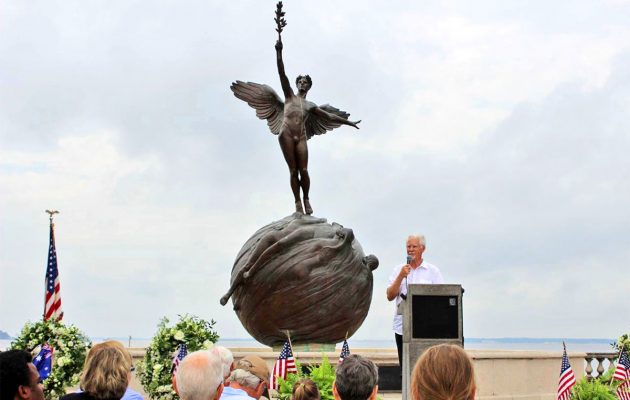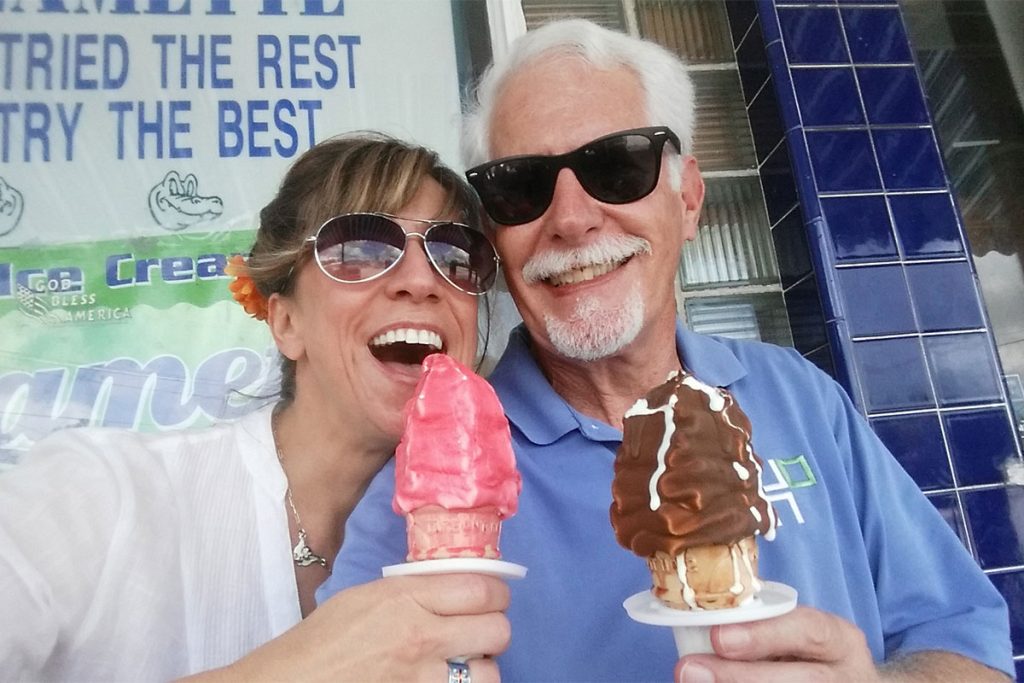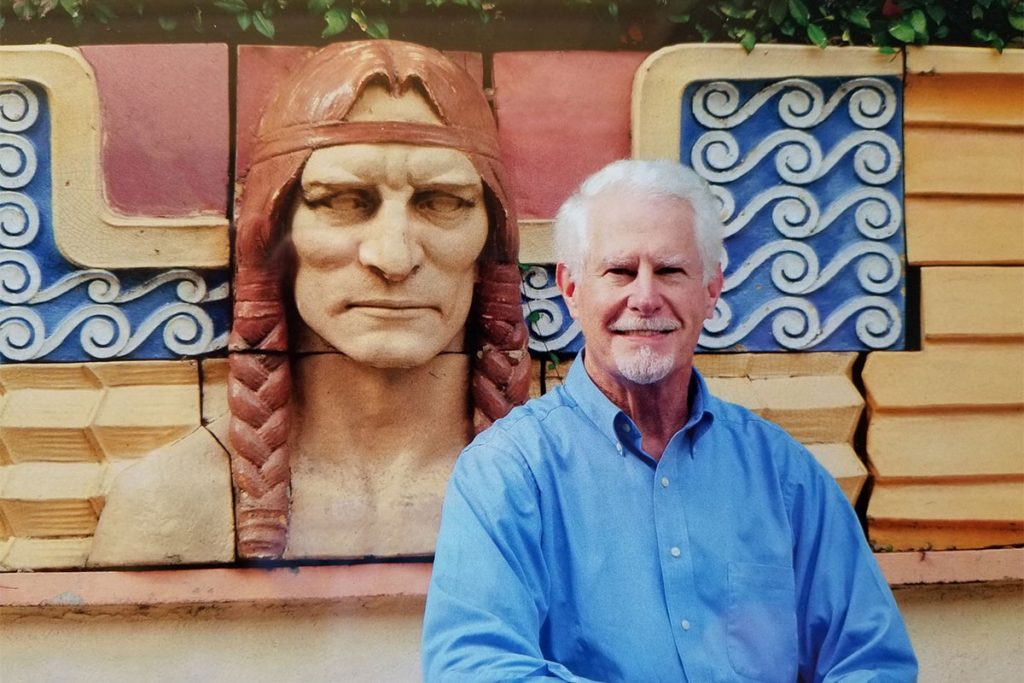For the Love of a Neighborhood: Wayne Wood

You may not know it, but if you’ve ever wandered through Riverside on a Saturday morning, you’ve no doubt appreciated the work of Dr. Wayne Wood.
Wood, nicknamed the “Mayor of Riverside,” is one of the leading founders of Riverside Avondale Preservation (RAP), an organization responsible for the salvation of many of the area’s beloved historic and architecturally significant buildings.
“It was an old neighborhood and there was nobody to speak for old neighborhoods,” said Wood, honoring the efforts of the initial members who, in 1974, drummed up a starting treasury of $32 to work as a “little local government” to promote and advocate for the preservation of the area, which was being torn down after being re-zoned commercial. Unaware at the time that they were part of a national movement to preserve the nation’s historic buildings, the group began walking and guided tours as a way to publicize the neighborhood.
“[Preservation] fit right into my philosophy of caring about where I live, and I had a built-in fondness for this neighborhood, having spent many childhood summers with my grandparents and just loving Riverside,” he said.
His grandparent’s home, which was run as a boarding house for over 40 years, was torn down two years before he came to Riverside in 1971.
“I was heartbroken,” said Wood. “But I wasn’t around, and had no influence over it. You don’t appreciate a building now, and then, 20 years from now, you wish you had it back.”

Today, this historian works to preserve these buildings not only in practice, but in print as well. Wood has written or co-written 15 books, for which he’s never received a dime’s payment. Instead, he chooses to take pleasure in the discovery, while letting the fruits of his labor benefit the causes that he cherishes.
“Jacksonville’s Architectural Heritage Bicentennial Edition” is Wood’s new book, due this fall. It’s an updated version of his 1989 edition, which was the best-selling book in Jacksonville for well over a year after its release. Published by the Jacksonville Historical Society, his new composition contains over 800 photographs of area buildings with cultural, historical and architectural significance. Nearly 200 new locations were added, including many mid-century modern buildings that were too young to qualify for the original book.
“People think of buildings made of steel, and stone, and wood as being sturdy. But, if you look at works of art, like a poem, or a book, or an opera, that is much less endangered than old buildings.” And like art, Wood feels these buildings should be preserved in order to be appreciated by all people.

“Collectively, everybody in the neighborhood owns the right to drive by and see that part of our heritage,” he said.
Shannon Blankinship, RAP’s current executive director, called Wood’s contributions to Riverside and RAP “unparalleled.”
“Wayne has been a pillar,” said Blankinship. “He has been that foundation to ground us to why we’re here, and what this is all about, and what the real essential characteristics are for RAP to continue to do the important work that we do.”
To help RAP support it’s preservation endeavors, Wood also created one of Riverside’s most popular attractions, Riverside Arts Market.
“Of all the things I’ve created, that’s one of the things of which I’m most proud,” he said.
“The Riverside Avondale that exists today would not have happened without Wayne Wood,” said resident Jeff Graf. “The Riverside Arts Market is a perfect example of the type of things that Wayne is responsible for helping make happen.”

The Riverside Arts Market, which draws more than 3,000 visitors underneath the Fuller-Warren Bridge each Saturday, was not only Wood’s brainchild, but the result of decades of his personal dedication.
While lecturing at an optometrist convention in Portland, Ore., Wood discovered a unique market – part farmer’s, part arts – located under the Burnside Bridge, and wanted to bring something similar to Jacksonville. He asked one of his patients, an engineer with the FDOT who was in charge of designing the forthcoming Fuller-Warren bridge, if it was possible. The answer was no. A fenced retention pond would be required beneath the bridge to accumulate rainwater runoff.
“He said, ‘No, you can’t make water run uphill.’ And I told him, “That’s what engineers do. They figure out how to make water run uphill. You can do it.’ And they did,” said Wood.
Wood then had to get clearance from 15 different government agencies, including the Coast Guard and Homeland Security, who each had some jurisdiction over the property. He had to seek approvals with the offices of four mayors and five governors. Overall, it took 15 years from the time Wood had that conversation in his office to the time RAM had actually opened. But he did it all for the love of the neighborhood.

“On opening day, we were all nervous. We didn’t know if anybody would show up,” recalled Wood. “The cars were lined up all the way down past the Times-Union building. It was one of the best days of my life.
Wood predicts Riverside, which was recognized by the American Planning Association as one of the 10 Great Neighborhoods in America a few years back, will continue to grow in fame, when compared with other neighborhoods throughout the country.
“I’m hoping, not just in the foreseeable future, but 100 years from now, that people will continue to have that same passion and go to the same extent that the people I’ve worked with have done to keep it special. Cherish it, nourish it, explain it to others to perpetuate the idea that something is beautiful and meaningfull, and has a history that enhances our local area.”
By Lindsay Gast
Resident Community News







